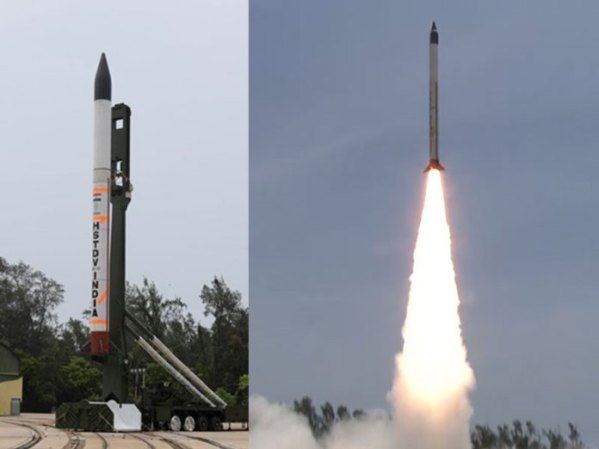India’s defence research agency, on 7 September, tested a flying vehicle that zipped at 2km per second, or six times the speed of sound, demonstrating an air-breathing engine envisioned for future civilian and military applications. Scientists and engineers at the DRDO’s APJ Abdul Kalam launch complex on Wheeler Island launched the hypersonic cruise vehicle on a proven solid-fuelled rocket which ferried it to an altitude of 30km.
India became the fourth country after the United States, Russia and China to develop and successfully test hypersonic technology. This indigenous technology will pave the way towards development of missiles travelling at six times the speed of sound (Mach 6).
The DRDO had attempted a technology demonstrator flight in June last year but the test had failed as the launch rocket itself did not reach the desired altitude.
“The engine performed in a textbook manner,” the DRDO said in a media release. The successful flight of the Hypersonic Technology Demonstrator Vehicle (HSTDV) involved multiple critical technologies such as hypersonic manoeuvers, air-breathing propulsion and high temperature materials, among others. The HSTDV performed on all parametres, including combustion chamber pressure, air intake and control guidance.
Potential Applications
Hypersonic flying vehicles have potential applications in weapons-delivery systems such as missiles with extended range and in futuristic spaceplanes for low-cost satellite launches. The DRDO now has the capacity to develop a hypersonic missile with scramjet engine in next five years.
There, the cruise vehicle separated from the rocket, began to “breathe” air, activated onboard ignition and achieved sustained combustion — driven by oxygen from air and a reservoir of hydrocarbon fuel — to fly at six times the speed of sound for 20 seconds.
Hypersonic flying vehicles are delivery platforms capable of both manoeuvering and flying faster than five times the speed of sound.
ALSO READ FUTURE TECHNOLOGIES : Hypersonic Weapons – The New Arms Race
These two features — manoeuverability and speed — enable hypersonic missiles to penetrate most missile defences, compressing the timelines for a response by a nation under attack.
A key advantage of air-breathing engines is that they do not need to carry fuel and an oxidiser as do all conventional rockets. This means a lower launch weight — a feature that can also be used to extend the range of missiles.
Scientists believe hypersonic vehicles could also find use in spaceplanes for which, Siddhartha said, conceptual studies have been under way in India for more than two decades. The long-term goal would be a reusable spaceplane — a vehicle that can return for repeated launches — that would help lower the cost of launching satellites.



















[…] ALSO READ: DRDO successfully tests hypersonic cruise vehicle […]